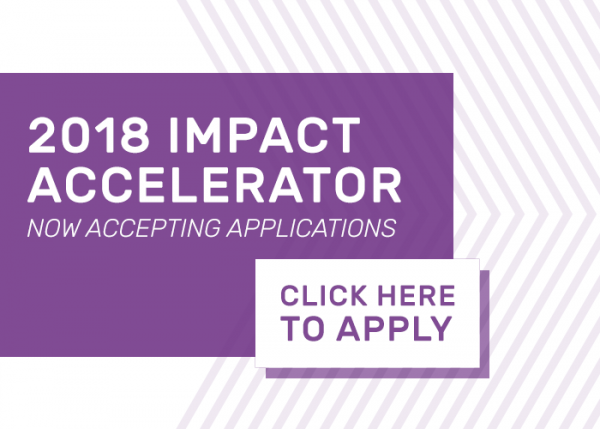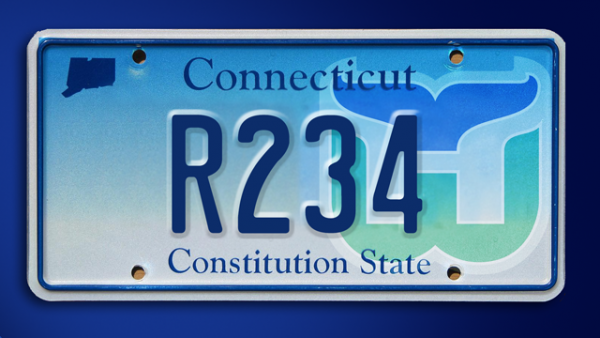Award-Winning Accelerator Prepares for Next Cohort of Start-up Businesses
/reSET, a Hartford-based non-profit organization supporting entrepreneurs, has opened applications for its highly regarded business accelerator program for 2018. Tailored for impact-driven businesses but available to early-stage ventures across all industries, reSET’s Impact Accelerator was a winner of the U.S. Small Business Administration Growth Accelerator Competition, and was the only Connecticut accelerator to receive the award, in 2015. Running from next January through May, the five-year old program will provide entrepreneurs with access to the knowledge and resources they need to grow their businesses and impact. Applications are being reviewed on a rolling basis; the final deadline is December 8, 2017. Applicants are not limited to the Hartford area or Connecticut; in previous cohorts, participants have been from other states and nations.
reSET is a nonprofit organization whose mission is advancing the social enterprise sector. Its strategic goals are threefold: to be the “go-to” place for impact entrepreneurs, to make Hartford known as Impact City, and Connecticut the Social Enterprise state. reSET meets entrepreneurs wherever they are in their trajectory and aims to help them take their businesses to the next level.
The accelerator program has graduated 80 businesses to date. Recent participants have experienced success in advancing their businesses, including competitor acquisition, venture capital investment, and nationwide sales and recognition. 
Among the businesses are Almasuite, CareerPathMobile, Phood, Pelletric, Eureeka, Save America, and Genius Box. Kate Pipa, co-founder of Genius Box, which develops and sends science kits to elementary and middle-school age children, credits the Impact Accelerator with helping her business gain traction.
“reSET’s Impact Accelerator was a great stepping stone for getting introduced to and more involved in Connecticut’s startup scene. Just being in reSET’s community allowed for access to workshops, mentors and service providers to answers questions and provide advice on different challenges that can come up when starting your business.”
Over the course of four weekend summits during the accelerator program, participants selected for the 2018 cohort will be connected to customers and industry-specific mentors. Up to 20 entrepreneurial teams will have access to:
- 20+ optional workshops covering a range of topics in business and social enterprise
- Numerous structured and unstructured opportunities to engage with investors and advisors
- 1-year reSET membership (includes access to co-working, programming and the on-site Entrepreneur-in-Residence)
- Exclusive discounts on business software packages and other resources
The accelerator will be free for accepted entrepreneurs and no equity will be taken from their operations. Graduates will also have an opportunity to compete for $20,000 in unrestricted funding at a culminating Venture Showcase in Spring 2018.
“As an entrepreneur myself, I have experienced the ups and downs of launching a new business,” said Jeremy Szechenyi, reSET’s Programs Manager. “Between reSET’s physical office and programs, we give entrepreneurs the resources and network that is critical to surviving and bringing their work to the next level.”
An information sessions will be held at reSET (1429 Park Street, Hartford) on October 26 from 12:30-1:30pm, and November 15 from 5:30-6:30pm. The sessions will be informal and meant to address prospective candidates questions.
reSET serves all entrepreneurs, but specializes in social enterprise ― impact driven business with a double or triple bottom line. In addition to providing co-working space, accelerator and mentoring programs, reSET aims to inspire innovation and community collaboration, and to support entrepreneurs in creating market-based solutions to community challenges.



 In Connecticut, individuals earning more than $200,000 gave 66.4 percent of all Connecticut giving, down 1.7 percent from 2012, according to the Chronicle analysis. The portion of all givers in this income bracket in Connecticut down 0.2 percent while the giving per itemizer is down 20.6 percent. In looking at the state’s major metropolitan areas, greater Bridgeport, Hartford, and New Haven, the analysis round that giving rates for taxpayers at four income levels fell below the average for the size group in each of the metropolitan areas.
In Connecticut, individuals earning more than $200,000 gave 66.4 percent of all Connecticut giving, down 1.7 percent from 2012, according to the Chronicle analysis. The portion of all givers in this income bracket in Connecticut down 0.2 percent while the giving per itemizer is down 20.6 percent. In looking at the state’s major metropolitan areas, greater Bridgeport, Hartford, and New Haven, the analysis round that giving rates for taxpayers at four income levels fell below the average for the size group in each of the metropolitan areas.
 onicle used 2015 Internal Revenue Service data on individuals who earn $50,000 or more annually and who itemize charitable deductions on their income-tax returns to create a snapshot of giving in every county and metropolitan area in the country. Only donations of taxpayers who took a deduction are included, the publication noted. The key measure, according to the Chronicle, is the giving ratio: the total of a locality’s charitable contributions as a share of its total adjusted gross income.
onicle used 2015 Internal Revenue Service data on individuals who earn $50,000 or more annually and who itemize charitable deductions on their income-tax returns to create a snapshot of giving in every county and metropolitan area in the country. Only donations of taxpayers who took a deduction are included, the publication noted. The key measure, according to the Chronicle, is the giving ratio: the total of a locality’s charitable contributions as a share of its total adjusted gross income.










 since 1897. In 2015, Saint Francis became part of Trinity Health of New England, an integrated health care delivery system that is a member of Trinity Health, Livonia, MI, one of the largest multi-institutional Catholic health care delivery systems in the nation.
since 1897. In 2015, Saint Francis became part of Trinity Health of New England, an integrated health care delivery system that is a member of Trinity Health, Livonia, MI, one of the largest multi-institutional Catholic health care delivery systems in the nation.
 Organization vanity plates include Amistad, Benevolent & Protective Order of the Elks, IUOE Local 478, Grand Lodge of Connecticut, Knights of Columbus, Olympic Spirit, P.T. Barnum Foundation Inc., Preserving Our Past CT Trust for Historic Preservation, Red Sox Foundation, Lions Eye Research Foundation, Special Olympics, Federated Garden Clubs, Fidelco Guide Dog Foundation, Keep Kids Safe, New England Air Museum and the U.S.S. Connecticut Commissioning Committee.
Organization vanity plates include Amistad, Benevolent & Protective Order of the Elks, IUOE Local 478, Grand Lodge of Connecticut, Knights of Columbus, Olympic Spirit, P.T. Barnum Foundation Inc., Preserving Our Past CT Trust for Historic Preservation, Red Sox Foundation, Lions Eye Research Foundation, Special Olympics, Federated Garden Clubs, Fidelco Guide Dog Foundation, Keep Kids Safe, New England Air Museum and the U.S.S. Connecticut Commissioning Committee.




























